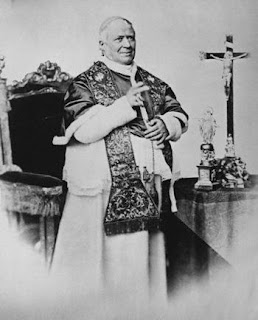Pius was forced to flee Rome in 1848, but he returned with the help of French troops. (Louis Napoleon Bonaparte, the French president who became Napoleon III, was courting the Catholic vote.) For the next 20 years, the Papal States depended on foreign aide. After Italy unified in 1861, they were the last holdout. But in 1870 France withdrew its troops, and Italian troops occupied Rome, making unification an unavoidable fact. But Pius refused to accept this, declaring himself the “Prisoner of the Vatican.”
As the papacy’s political power declined, Pius strengthened his spiritual rule, and so reshaped the Church Universal. In 1854 he proclaimed the dogma of the Immaculate Conception, and in 1856 he universalized the Feast of the Sacred Heart. The highpoint of his campaign climaxed with the declaration of papal infallibility at the First Vatican Council (1869-1870). Infallibility was a bulwark against the growing secularism threatening both Church and world. In 2000 Pius IX, the pope who called the First Vatican Council, was beatified along with John XXIII, the pope who called the Second Vatican Council. (Trivia: Pius IX was the first pontiff to be photographed.)












